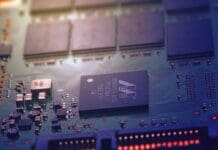This post is also available in:
 עברית (Hebrew)
עברית (Hebrew)
A powerful new kind of artificial intelligence (AI) that approximates human perception can defeat anti-bot security measures. This machine-learning algorithm mimics the human brain.
CAPTCHAs (Completely Automated Public Turing test to tell Computers and Humans Apart) are one of the most widespread security systems used on the internet to prevent non-humans from accessing websites. They are those online tests that challenge you to identify fuzzy-looking letters and numbers – which automated bots supposedly can’t recognise. Only now they can.
Traditional CAPTCHAs make it difficult for automated systems to identify the characters and then enter the right password, whereas the human eye can (usually) easily recognise the displayed text.
“Biology has put a scaffolding in our brain that is suitable for working with this world,” co-founder of AI startup Vicarious, Dileep George, told digitaltrends.com. “It makes the brain learn quickly. So we copy those insights from nature and put it in our model.”
According to sciencealert.com, George and his team developed a computer model they call a Recursive Cortical Network (RCN), which is able to efficiently deduce the grainy symbols depicted in CAPTCHA tests.
One of the reasons it’s been difficult for AI systems to get past CAPTCHA barriers is because of the way deep learning neural networks work. These kinds of systems learn by example, developing the ability to recognise letters and numbers by processing thousands of pictures of them.
It’s an effective tool for training AI, but according to George, it’s susceptible to the kind of distortions and variations introduced by CAPTCHAs, unless you have vast amounts of processing power at your disposal.
Rather than being trained up on thousands of images or pre-labelled As, Bs, Cs, and so on in order to distinguish the letters of the alphabet, the RCN uses algorithms that enable it to generalise – detecting patterns in contours and surfaces, and able to separate instances of objects even when they overlap.
In their tests, that approach enabled the RCN to be 300 times more data-efficient at cracking CAPTCHAs than deep-learning models, achieving up to 90 percent accuracy in character recognition.
The point of their RCN, ultimately, is to develop AI systems that more closely resemble what we understand about neuroscience.


























